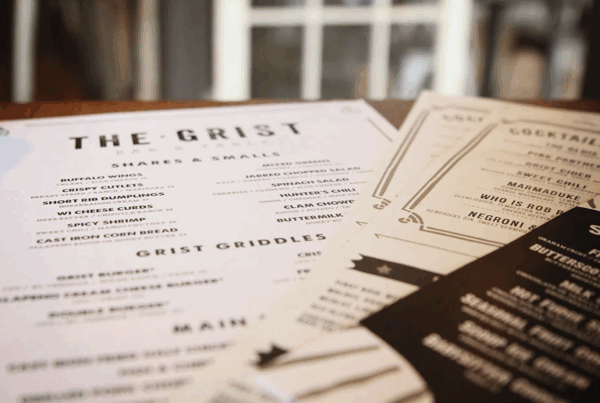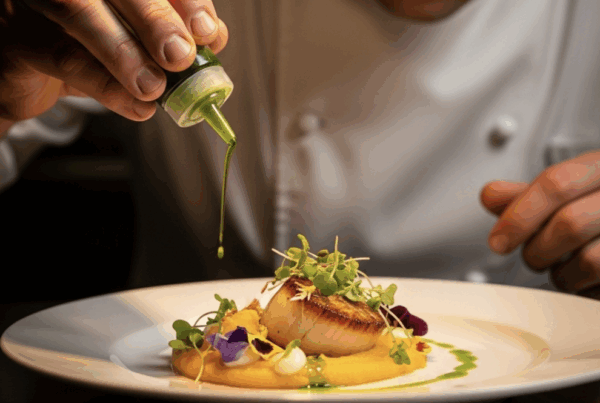Every plate you serve should be a reflection of your restaurant’s story, personality, and purpose—but it should also be profitable. In today’s industry landscape, where rising food costs, labor shortages, and shifting customer expectations challenge even the most seasoned operators, profitability isn’t a nice-to-have—it’s survival. While operators often look to marketing, staffing, or operational systems to increase revenue, the real game-changer might already be in front of your customers: the menu.
Your menu is more than a list of offerings. It’s the beating heart of your business. It controls everything from purchasing and prep time to labor needs and table turnover. And when it’s not optimized, it quietly chips away at your bottom line. Many restaurants lose money not because they’re slow or unpopular, but because their menu is mismatched with reality—overdesigned, underpriced, or out of step with what the kitchen can execute profitably.
Optimizing your menu doesn’t mean gutting your identity. It’s about making intentional decisions rooted in data, efficiency, and strategy. A great menu doesn’t just reflect your vision—it sustains it.
The Hidden Costs Lurking Behind Popular Dishes
Let’s say you have a best-seller that everyone raves about. It’s Instagram-worthy, it’s well-reviewed, and it flies out of the kitchen. But is it actually making you money? Too often, restaurant owners assume that popular items are profitable, when in reality, they’re margin killers. Complex ingredients, long prep times, or poorly calculated food costs can quietly sabotage your revenue. Just because a dish is busy doesn’t mean it’s working for your bottom line.
On the flip side, you might have a sleeper hit—something that’s easy to prep, inexpensive to make, and delivers a solid margin—but you bury it on the menu or fail to highlight its value. When you audit your menu through the lens of cost vs. performance, you begin to see what’s really driving revenue and what’s draining it.
That’s where proper menu engineering comes in. It’s not about turning every dish into a financial formula. It’s about understanding what each item costs you, how it sells, and whether it’s earning its keep on the menu. In a time when every dollar matters, knowing which dishes are carrying their weight—and which aren’t—is a competitive advantage.
Price Isn’t Just About Math—It’s About Psychology
Pricing your menu items is more than a matter of covering costs and applying a markup. It’s also about how your guests perceive value. Price something too high, and customers might hesitate. Price it too low, and they may assume it lacks quality—or worse, you might undercut your profits to the point where you’re losing money on every order. It’s a delicate balance between actual cost and perceived worth.
Small changes in pricing strategy can yield big results. Consider the impact of removing the dollar sign, offering strategic anchor pricing, or bundling items into value-rich combos. These subtle psychological cues can influence customer behavior without changing the quality or portion size of the food. At the same time, transparency matters. Today’s diner is savvier and more value-conscious than ever. They know when something feels overpriced—and they’ll let you know.
Effective pricing doesn’t mean charging the most—it means charging smart. It means reviewing your food cost percentages regularly, understanding seasonal cost fluctuations, and aligning price points with your customer base and location. It also means knowing when to raise prices, how to communicate those changes, and what added value to provide in return.
Simplifying Your Menu to Amplify Your Brand
A bloated menu is one of the biggest threats to kitchen efficiency and food cost control. It creates chaos on the line, confusion for guests, and complications with ordering and inventory. More often than not, a smaller, well-curated menu performs better than an expansive one with too many options. It encourages consistency, reduces waste, and speeds up service—all of which contribute directly to profitability.
But streamlining your menu doesn’t have to feel like sacrificing creativity. Instead, think of it as refining your brand voice. What do you want your restaurant to be known for? What dishes represent your concept the best? What ingredients can you use across multiple menu items to create variety without redundancy? A leaner menu forces you to focus on your strengths and remove the distractions that may be costing you more than you realize.
The best menus are built with purpose. They’re not based on what’s trendy or what competitors are doing—they’re rooted in what you do best, what your guests crave, and what keeps your kitchen running smoothly. A well-executed, focused menu does more than simplify operations—it gives customers a clearer picture of who you are and why they should keep coming back.
Menu Design Isn’t Just Aesthetics—It’s Strategy
The way your menu is physically presented also affects what and how people order. Strategic design can guide guests toward higher-margin items, improve decision-making, and even increase average ticket size. Menu design is an art and a science. It involves visual hierarchy, item placement, font choices, color psychology, and even descriptive language.
Menus that are cluttered or hard to read cause customers to rush or make decisions they later regret. Menus that are clean, thoughtfully organized, and visually inviting encourage customers to explore and trust your recommendations. Highlighting certain dishes, using chef’s notes, or creating visual anchors can subtly steer guests toward the items that make the most sense for your kitchen—and your profit margin.
Even in a digital-first world where many people scan QR codes instead of flipping laminated pages, design still matters. Your digital menu needs to be just as intentional as your physical one. The goal isn’t just to list what’s available—it’s to create an experience, tell a story, and make choices easier and more rewarding for the customer.
Your Kitchen’s Capacity Should Guide Your Menu
One of the most common mismatches in restaurants is between the ambition of the menu and the reality of the kitchen. Complex dishes may sound great on paper, but if they bottleneck the line, increase ticket times, or require specialized labor that’s hard to maintain, they become a liability. A profitable menu respects the limits of your operation and works within them.
Before adding new items or revamping your offerings, consider how each dish fits into your existing workflow. Can it be prepped in advance without sacrificing quality? Does it use ingredients already in stock? Does it require an additional station or specific cooking equipment? The more seamlessly a dish fits into your kitchen’s rhythm, the more profitable—and sustainable—it becomes.
Profitability isn’t just about individual food costs—it’s about system-wide flow. If your kitchen runs smoother, your staff stays happier, your customers get their food faster, and you turn tables more efficiently. All of that contributes to the bottom line, even if the changes are invisible to the average guest.
Your Menu Is a Living Document—Treat It That Way
Restaurants change. Costs change. Customer preferences evolve. Your menu should reflect those shifts. Too often, operators treat the menu like it’s set in stone—unchangeable once printed or uploaded. In reality, your menu should be reviewed regularly, updated thoughtfully, and adjusted as needed. Seasonal ingredients, supply chain issues, pricing shifts, and even local events should inform your approach.
A menu audit every few months can help you spot trends, identify underperforming dishes, and respond to new challenges before they become problems. Involving your kitchen staff and front-of-house team in that process can also provide valuable insights—what’s hard to prep, what customers complain about, and what servers are excited to sell. Those conversations can lead to smarter menus and better service.
Flexibility doesn’t mean inconsistency. It means being proactive. It means treating your menu like the powerful business tool it is—not just a list, but a roadmap to profitability, sustainability, and success.
Reclaiming Control, One Plate at a Time
At the end of the day, your menu is a direct reflection of your restaurant’s vision, operations, and health. It’s where creativity meets commerce, and where guest experience meets kitchen reality. A well-designed, intentionally priced, and operationally aligned menu can dramatically change your business—not just by improving profit margins, but by making your entire restaurant run more smoothly and purposefully.
Restaurant Resolutions exists to help owners like you find clarity in the chaos. Whether you’re looking to audit your menu, refine your pricing, or create a more efficient kitchen-to-table workflow, our team can guide the process from insight to execution. Your menu doesn’t have to be a guessing game. With the right tools, it can become your greatest asset.



